
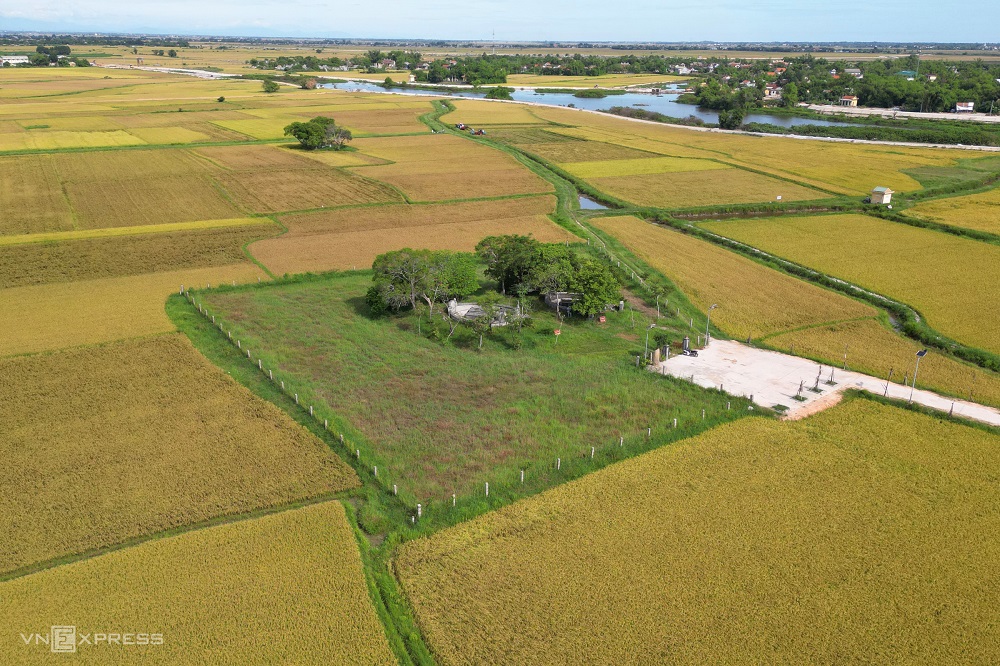
Famous general Nguyen Tri Phuong (1800 - 1873) served as mandarin under King Minh Mang, King Thieu Tri and King Tu Duc. He was the general commander of the Nguyen Dynasty army against the French army in Da Nang (1858), defending Gia Dinh citadel (1861) and Hanoi citadel (1873).
In 1873, Hanoi fell, he was seriously injured and captured by the French. The French soldiers offered to save him, but he refused and went on a hunger strike for a month until his death. Nguyen Tri Phuong and his son, his son-in-law Nguyen Lam, were brought back to be buried in their hometown in Phong Chuong commune, Phong Dien district, Thua Thien - Hue province. In the photo is the grave of Nguyen Tri Phuong and his son.
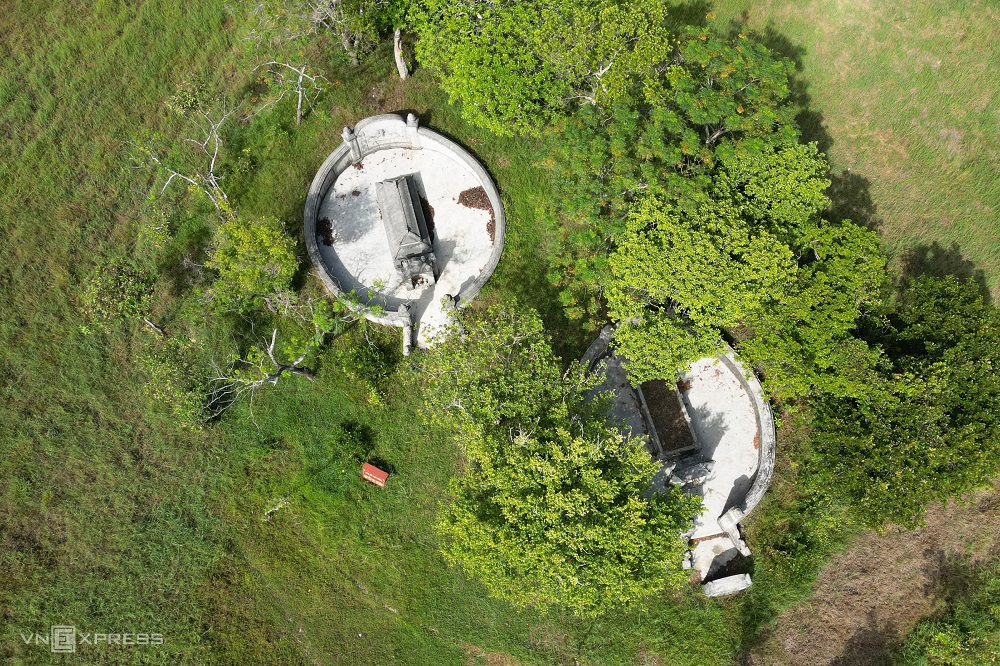
The graves of famous general Nguyen Tri Phuong and his son Nguyen Lam are located on a high mound of about 500 square meters in the middle of a vast rice field. Surrounded by rows of ancient trees.
Nguyen Tri Phuong was the commander of the Nguyen Dynasty's army defending Dien Hai citadel in Da Nang, organizing the defense to repel the invading French army in 1858. According to the book Dai Nam Liet Truyen of the National History Office of the Nguyen Dynasty, in 1858 French troops marched into Da Nang estuary, bombarded the fortress, and besieged the two citadels of An Hai and Dien Hai. Military President Le Dinh Ly was hit and injured. In the midst of that difficult time, King Tu Duc appointed Nguyen Tri Phuong as the second military president of Quang Nam.
Nguyen Tri Phuong examined the situation on the enemy side, drew a map and determined that the French army was in battle and the Nguyen dynasty army was in defense. He came up with a plan to use defense as war and build more fortresses. The Nguyen Dynasty army under the command of Nguyen Tri Phuong built forts from the beach to Thac Gian in Phuc Ninh. Outside the ramparts, dug holes and planted spikes, covered with sand and grass, divided into military uniforms close to Dien Hai. The French army attacking Dien Hai citadel fell into a hole, the Nguyen Dynasty troops at the ramparts opened fire, forcing the French army to retreat.
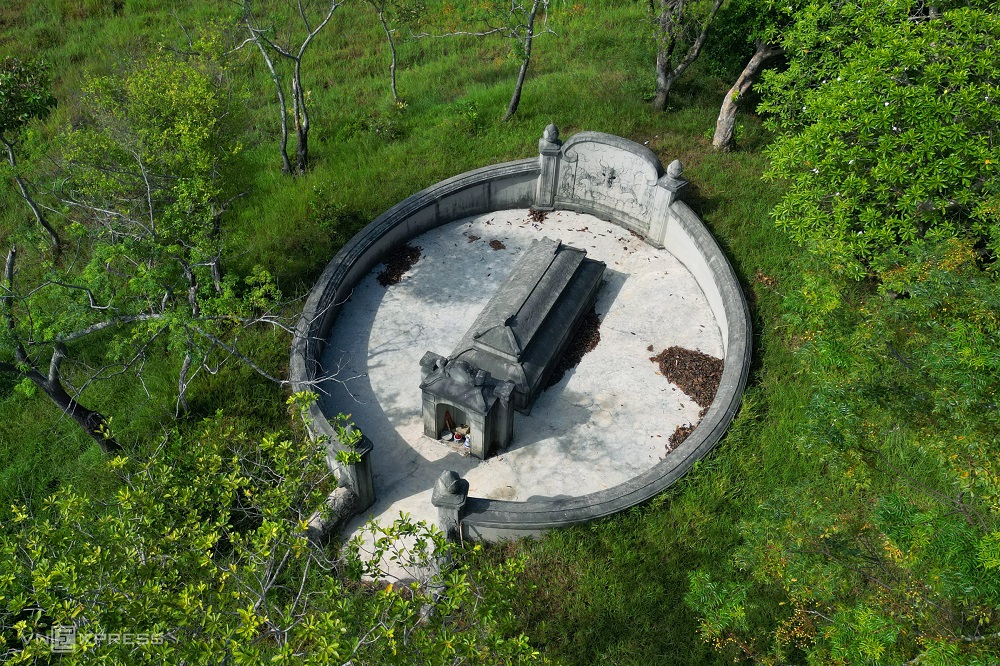
The famous general's tomb is surrounded by a circular wall and a screen carved with a dragon image.

In 1875, King Tu Duc believed that Nguyen Tri Phuong had gone through three kings and was faithful to the royal court, so he allowed him to be worshiped in many places. The king built Trung Hieu Temple in Phong Chuong to worship Nguyen Tri Phuong, his younger brother Nguyen Duy and his son Nguyen Lam. In the photo is Trung Hieu Temple in Phong Chuong commune, Phong Dien district, Thua Thien-Hue.
Today, Trung Hieu Temple is cared for by Nguyen Tri Phuong's descendants and is incense-filled. The campus is more than 1,000 m2 wide, surrounded by green bamboo and fields.
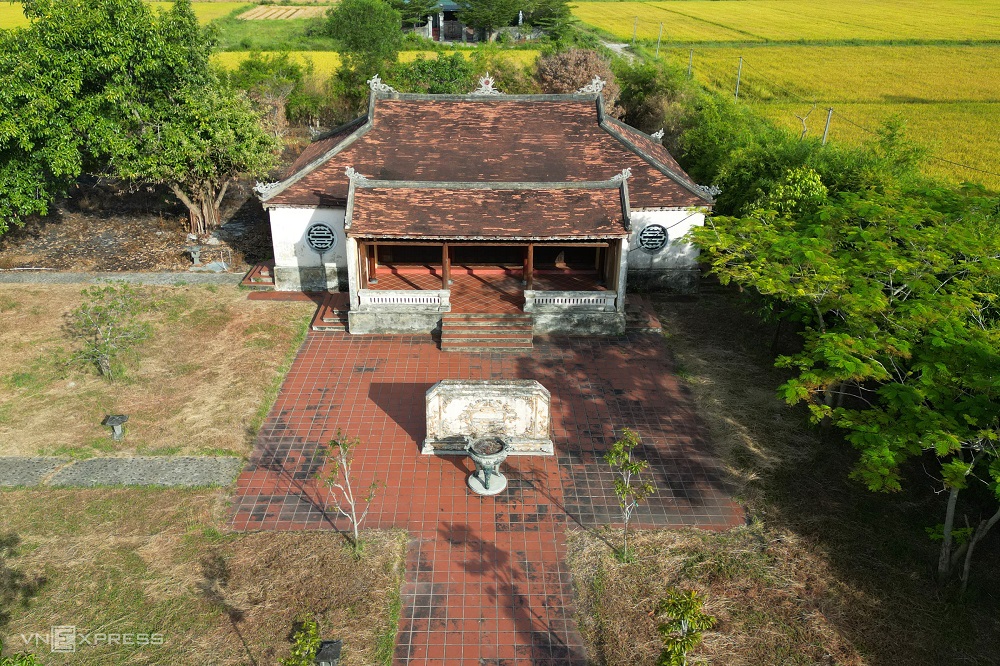
Trung Hieu Temple, or Trung Hieu, worshiping the 'Three Trung Liet' Nguyen Tri Phuong, Nguyen Duy and Nguyen Lam is roofed with white tiles, a typical rectangular tile of Hue architecture, with good thermal insulation. In 1990, the tombs of Nguyen Tri Phuong, Nguyen Duy, Nguyen Lam and Trung Hieu Tu were recognized as national relics.
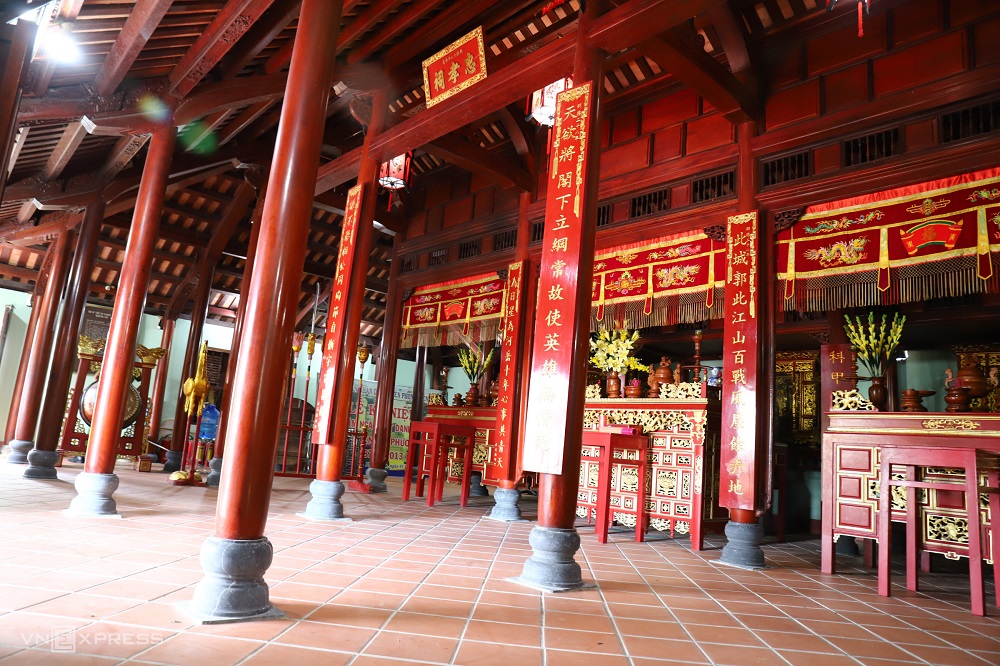
In 2010, Phong Dien district organized the restoration and embellishment of Trung filial piety following the model of an ancient three-compartment, two-wing house. In the middle of the church is an incense altar worshiping famous general Nguyen Tri Phuong, on the left is his son-in-law Nguyen Lam, on the right is his younger brother Nguyen Duy.
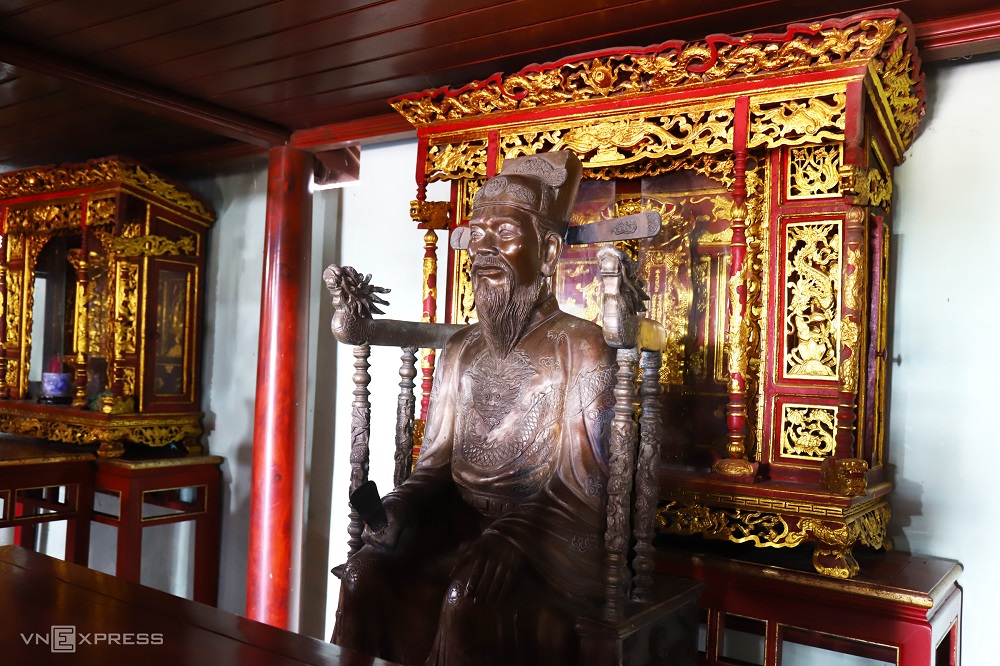
The bronze statue of famous general Nguyen Tri Phuong is placed in the middle worship space.
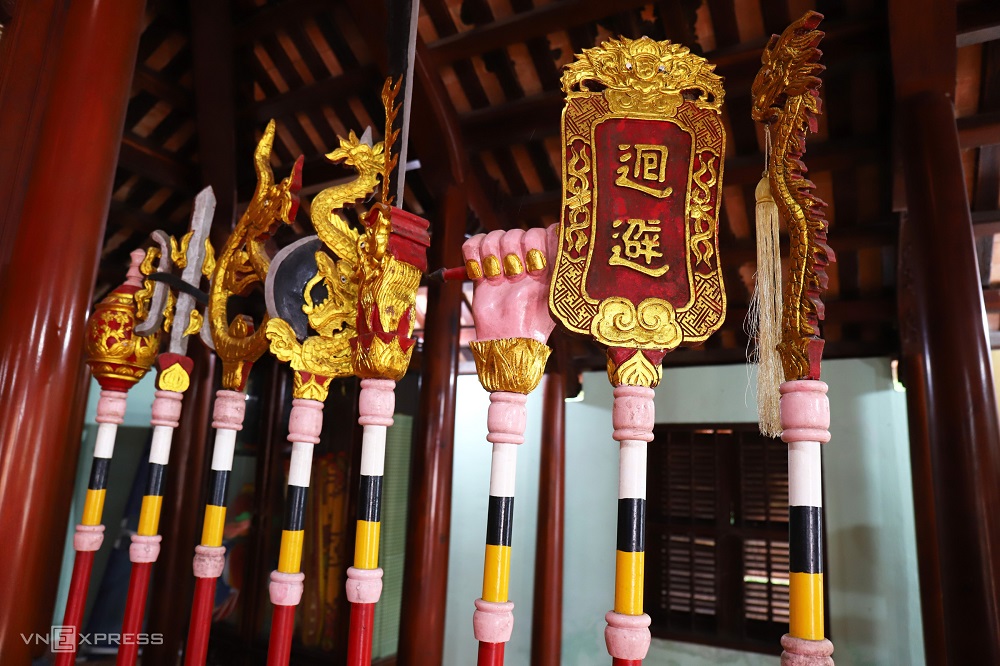
Wooden utensils (worship objects) are displayed in the temple.

The stone stele engraved with Nguyen Tri Phuong's biography was built in 2010, when the temple was inaugurated after renovation.
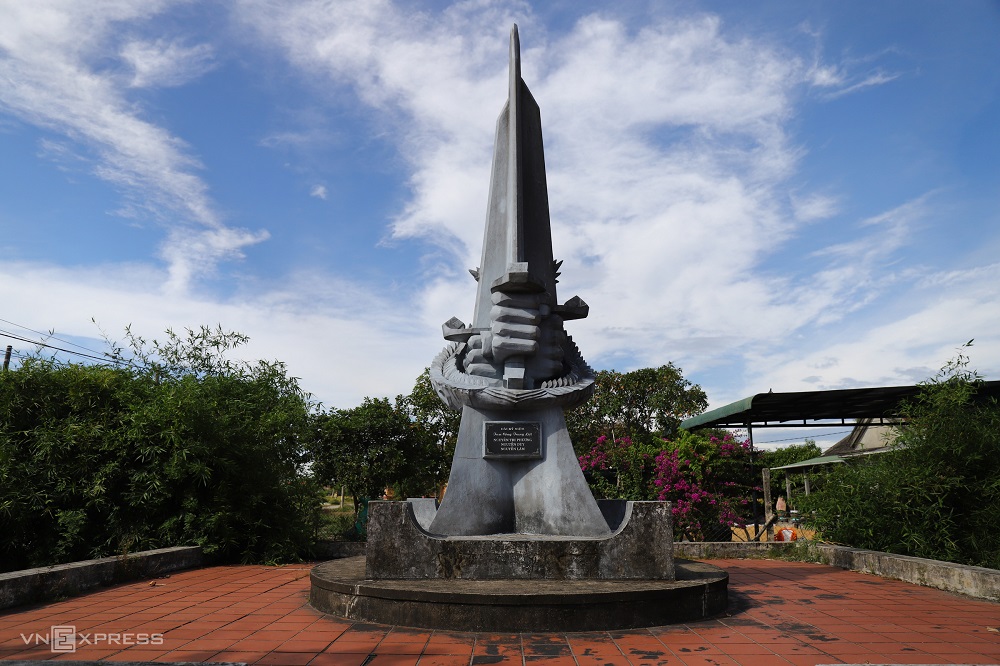
The 'Three Cong Zhong Lie' monument was built in the grounds of Trung Hieu Temple.
Quote source: Nơi an nghỉ của danh tướng Nguyễn Tri Phương - Báo VnExpress Du lịch
Link to original article: https://vnexpress.net/noi-an-nghi-cua-danh-tuong-nguyen-tri-phuong-4647615.html